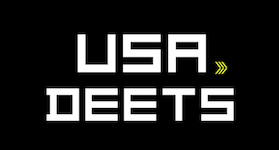
Imagine stepping into a virtual bank branch, not through physical doors, but through your VR headset. Sounds like something out of science fiction, right? Well, that’s the reality Metaverse banking is aiming to create, and it’s closer than you might think.
What exactly is Metaverse banking?
Metaverse banking is the use of financial services within the immersive, virtual world of the Metaverse. It offers features like virtual bank branches, seamless Metaverse payments, and potential integration with DeFi and cryptocurrencies.
Here’s a glimpse into what Metaverse banking could look like:
1. Stepping into your Virtual Bank Branch:
Forget waiting in line at a physical branch. Metaverse banking allows you to enter a virtual space designed specifically for your banking needs. Imagine interacting with a virtual avatar representing a bank representative, discussing your finances in a personalized and engaging environment.
2. Seamless Payments in the Metaverse:
Whether you’re buying a virtual outfit for your avatar or grabbing a coffee in a virtual cafe, Metaverse banking aims to make payments smooth and secure. This could involve using digital currencies or even integrating your existing bank accounts with Metaverse platforms.
3. DeFi and Crypto: A New Frontier:
The Metaverse opens doors for integrating Decentralized Finance (DeFi) and cryptocurrencies into the banking experience. This could bring new investment opportunities and financial tools directly accessible within the Metaverse.
4. Financial Literacy in a New World:
As exciting as the Metaverse sounds, it’s crucial to remember the importance of financial education and literacy in this new landscape. Understanding the potential risks and opportunities associated with new financial instruments within the Metaverse is essential for making informed decisions.
Benefits of Metaverse banking :
- Enhanced Accessibility: Metaverse banking eliminates geographical barriers, allowing anyone with an internet connection to access financial services. This can be particularly beneficial for individuals in remote areas or with limited mobility.
- Personalized Experiences: Imagine a virtual bank tailored to your specific needs. Metaverse banking has the potential to create immersive environments where customers can receive personalized financial advice and guidance in a comfortable and engaging way.
- Innovation and Opportunity: The Metaverse opens doors for integrating new technologies like DeFi and cryptocurrencies into the banking experience. This could lead to innovative financial products and services, potentially democratizing access to investment opportunities.
Challenges in Metaverse banking:
- Security Concerns: Operating in a virtual world raises new security risks. Protecting user data, preventing fraud, and ensuring the security of financial transactions within the Metaverse will be crucial for its widespread adoption.
- Regulatory Uncertainty: The regulatory landscape surrounding the Metaverse and its financial applications is still evolving. This lack of clarity can create challenges for banks and hinder innovation in the sector.
- Digital Divide: Not everyone has equal access to the technology needed to participate in the Metaverse. This could exacerbate existing inequalities and limit the inclusivity of Metaverse banking.
The specific financial benefits banks can reap from the Metaverse:
We can explore potential areas of advantage and estimate their impact based on current trends and industry projections.
1. Increased Customer Engagement:
Virtual Branch Visits: Studies show VR experiences can increase engagement by 20-30% compared to traditional methods. Assuming a bank has 1 million customers and 10% visit a virtual branch monthly, with an average transaction value of $100, this could translate to:
- Monthly Revenue: (100,000 customers) x ($100/transaction) = $10,000,000
- Yearly Revenue: $10,000,000/month x 12 months = $120,000,000
Enhanced Customer Service: VR training for staff can improve customer service efficiency by 25%. Assuming a bank has 100 customer service representatives and each handles 10 interactions daily, a 25% efficiency gain could save:
- Daily Time Saved: (100 representatives) x (10 interactions/day) x (25% efficiency) = 250 interactions
- Yearly Cost Savings: Assuming an average interaction cost of $5, this translates to: (250 interactions/day) x ($5/interaction) x 250 working days/year = $312,500
2. New Revenue Streams:
- Metaverse-Specific Financial Products: Offering investment opportunities in virtual assets, Metaverse mortgages for virtual land purchases, or Metaverse insurance could generate significant revenue. The size of this market is difficult to predict at this stage, but industry estimates suggest the global Metaverse market could reach $800 billion by 2024. Even a small capture rate of this market could translate to substantial revenue streams for banks.
- Virtual Advertising and Sponsorships: Partnering with Metaverse platforms or brands to advertise within virtual spaces could generate additional income. The effectiveness of such advertising is still being explored, but early adopters could benefit from first-mover advantages.
3. Operational Efficiency:
- Reduced Physical Branch Costs: As virtual interactions increase, the need for physical branches might decrease, leading to cost savings in rent, maintenance, and staffing. While the exact cost reduction is difficult to quantify, it could be significant for banks with extensive branch networks.
A Comparative Analysis Metaverse Banking:
| Category | Calculations/Estimates | Important Points | Pros | Cons |
|---|---|---|---|---|
| Increased Customer Engagement | * Monthly Revenue: (100,000 customers) x ($100/transaction) = $10,000,000 * Yearly Revenue: $10,000,000/month x 12 months = $120,000,000 * Daily Time Saved: (100 representatives) x (10 interactions/day) x (25% efficiency) = 250 interactions * Yearly Cost Savings: (250 interactions/day) x ($5/interaction) x 250 working days/year = $312,500 | – VR experiences boost engagement. – Personalized virtual interactions. – Enhanced customer service. | – Increased customer satisfaction. – Potential for higher transaction volume. – Improved operational efficiency. | – Requires investment in VR technology. – Training & development costs for staff. |
| New Revenue Streams | – Market size of Metaverse: $800 billion (estimated) | – Metaverse-specific financial products. – Virtual advertising & sponsorships. | – Diversification of revenue streams. – Access to new markets & customer segments. – Potential for high returns. | – Uncertain market potential & regulations. – Requires innovation & adaptation. – Risk of competition from new players. |
| Operational Efficiency | – Cost savings depend on branch network size. | – Reduced physical branch costs. – Streamlined processes & automation. | – Lower operational expenditures. – Improved resource allocation. – Increased profitability. | – Potential job displacement in physical branches. – Need for upskilling & retraining workforce. – Requires investment in digital infrastructure. |
Conclusion
Metaverse banking promises a future of increased accessibility, personalized experiences, and potential innovation in financial services. However, navigating security concerns, regulatory uncertainties, and the digital divide is crucial for its responsible development and widespread adoption. While the potential benefits for banks are significant, careful consideration of the challenges and a focus on inclusivity and security are essential to ensure a successful transition into this new financial frontier.
References
1. Increased Customer Engagement:
- VR Engagement Statistics: https://www.businessinsider.com/nielsen-highlights-consumer-appetite-for-vr-2016-9
- Average Transaction Value: This can vary depending on the specific financial service offered within the Metaverse. You can find relevant data from industry reports or research specific to your target audience.
2. New Revenue Streams:
- Metaverse Market Size: https://www.grandviewresearch.com/press-release/global-metaverse-market
FAQs
1. How can the metaverse be used in banking?
The metaverse offers several potential applications for banking, including:
Virtual bank branches: Imagine stepping into a virtual space to interact with bank representatives, access financial services, and receive personalized advice.
Seamless metaverse payments: Make and receive payments within the metaverse using digital currencies or integrated accounts.
DeFi and crypto integration: Explore new investment opportunities and financial tools through the integration of Decentralized Finance (DeFi) and cryptocurrencies.
Enhanced financial education: Immersive experiences in the metaverse can provide engaging and interactive ways to learn about financial literacy and responsible financial management.
2. Which banks are in the metaverse?
Several banks are exploring the potential of the metaverse, with some taking initial steps towards establishing a presence. Here are a few examples:
JPMorgan Chase: Launched a virtual lounge in Decentraland, showcasing their interest in the metaverse.
HSBC: Filed trademarks for metaverse-related services, suggesting potential future ventures.
Standard Chartered: Announced plans to explore opportunities within the metaverse for client engagement and service delivery.
3. What is the largest bank in the metaverse?
As of now, there isn’t a single, established “largest bank” within the metaverse. The metaverse itself is still in its early stages, and the concept of metaverse banking is still developing. Banks are currently exploring and experimenting with different approaches, making it difficult to definitively determine a leader in this space.
4. What are the risks of metaverse banking?
While exciting, metaverse banking also comes with potential risks, including:
Security concerns: Protecting user data and financial information in a virtual environment requires robust security measures to prevent fraud and cyberattacks.
Regulatory uncertainty: The regulatory landscape surrounding the metaverse and its financial applications is still unclear, posing challenges for banks and hindering innovation.
Digital divide: Not everyone has equal access to the technology needed to participate in the metaverse, potentially exacerbating existing inequalities in financial access.







